The Troubling Consequences of the Vanishing Ice at Glacier National Park

The very name of Glacier National Park, a 1-million-acre expanse in northwest Montana on the Canadian border, comes from ice. But the name may need to change by 2030: Experts predict the formations could disappear by then.
According to the U.S. Geological Survey, the glaciers in Glacier National Park have shrunk by an average of 39 percent since 1966; some lost up to 85 percent of their ice. A 2014 study in Science attributes global loss in glacier mass to both anthropogenic (or human caused) and natural climate changes. The study blames human causes for about a quarter of the loss between 1851 and 2010, but that share increased steadily and accelerated to account for almost two-thirds of the loss between 1991 and 2010.
Glaciers are one of the main reasons 2.9 million people visited the eponymous national park in 2016. But the looming loss of these formations has many significant ramifications. Moreover, the changes at the park are representative of what's happening globally—and visitors can see these changes for themselves.
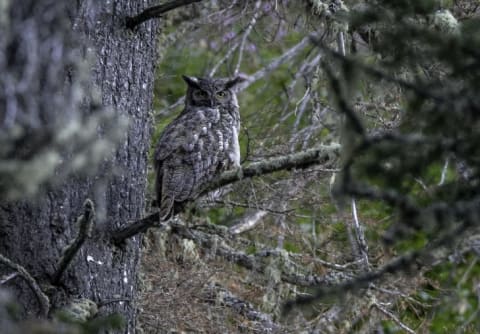
Glaciers are masses of ice, snow, water, rock, and sediment that move under the influence of gravity. To determine just how many glaciers it has, Glacier National Park follows the commonly accepted guideline from the USGS Climate Change in Mountain Ecosystems Program: a body of ice must be at least 25 acres to be considered a glacier. Based on that guideline, the number of glaciers in the park dropped from 150 in the late 19th century to 26 today. Those that remain have shrunk significantly, as clearly seen in these images of Swiftcurrent Glacier below, from 1930 (top) and 2015 (bottom).
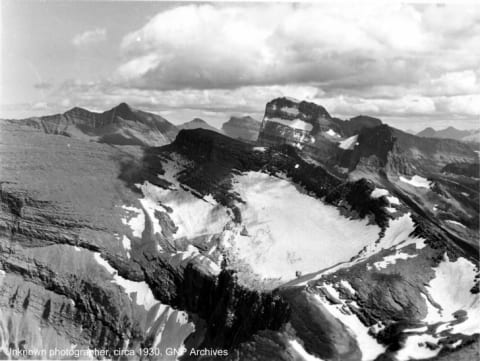
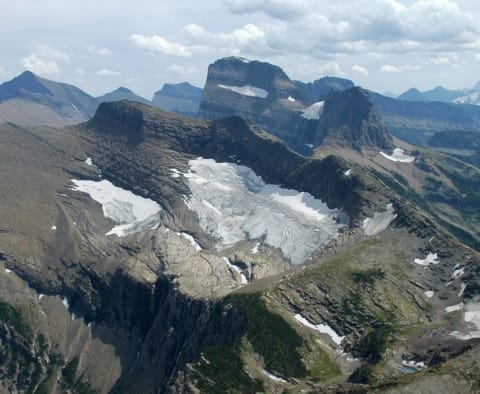
Swiftcurrent is only one example. In 2017, the USGS published a time series analysis of the margins of named glaciers in the park, with measurements from 1966, 1998, 2005, and 2015/2016. Scientists used aerial photography and satellite imagery to measure glacier perimeters in late summer when seasonal snow had melted, revealing the extent of the glacial ice. The data show reduced area of all glaciers since 1966.
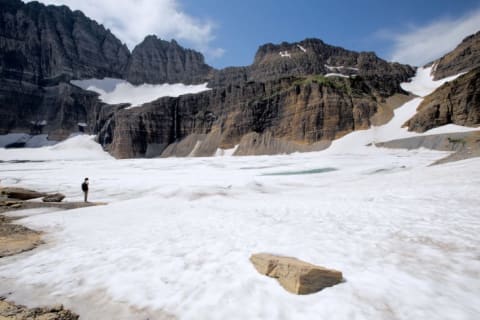
Photography isn't the only way to monitor the size of a glacier. Scientists also analyze mass balance—essentially, a glacier's gains and losses over a season. According to data, glaciers the world over, not just in Glacier National Park, are seeing more losses in ice than gains. An inventory of the average mass balance of 10 glaciers in Washington state's North Cascades showed that since 1984, they've had a cumulative loss of 43.5 feet in ice thickness. And a report from the World Glacier Monitoring Service—which compiles data from more than 30 countries representing more than 80 glaciers—found that 2015 was the 36th consecutive year without positive annual mass balances. That trend was expected to continue.
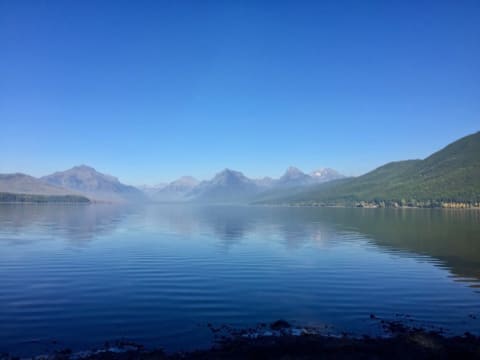
Smaller glaciers mean less water. Worldwide, mountain glaciers and snowpacks contribute water used for drinking and irrigation for millions of people.
Few communities rely on Glacier National Park's glaciers for drinking water, but wildlife certainly does. Fewer and smaller glaciers, as well as reduced winter snowpack, mean much less groundwater recharge and summer runoff, resulting in lower water levels in streams, rivers, lakes, and wetlands during the growing season. That, in turn, reduces habitats in streams for invertebrates and fish. Less meltwater from glaciers also raises summer water temperatures, which could cause the local extinction of temperature-sensitive aquatic species.
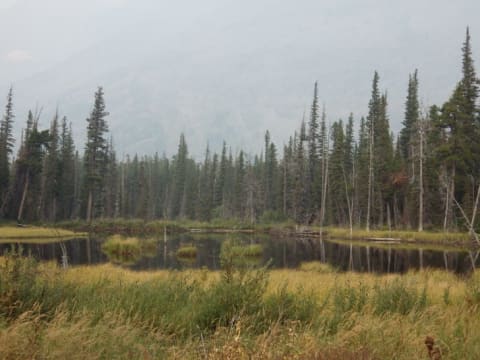
The melting of the ice puts animals at risk in other ways as well. Climate change has direct impacts on the movement, migration, and habitats of wildlife. Mobile species with large geographic ranges and more generalist diets can tolerate wider ranges of climatic conditions and likely will better adapt to a changing climate. Ones limited to specific regions fare less well.
David Benson, professor of biology at Marian University in Indianapolis, studies how white-tailed ptarmigan (below) around Logan Pass (above) deal with climate change. Every living organism has three options, he points out—move, adapt, or die—and the birds are using all three: Their territories in early summer and habitat in late summer have moved about 1000 feet farther up slope, their habitat preference has changed, and their numbers have dropped drastically. In the 1950s, the population at Logan Pass in late summer averaged 55 birds. By the late ‘90s, that average had dropped to 35, and in the past five years, to less than 15.
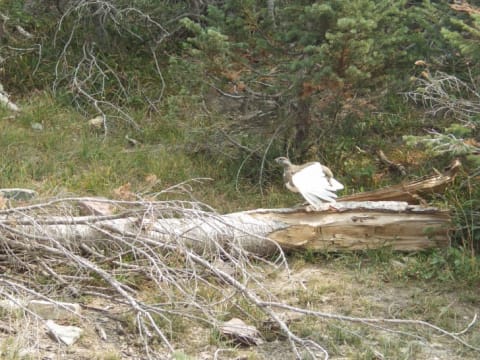
Ptarmigan stay cool by hanging out near ice, water, and snow in late summer, and loss of glaciers plus smaller perennial snow packs in the park are forcing them to go farther up slope to find snow and ice. Climate change is also causing movement in the treeline around Logan Pass, which makes the area less suitable habitat for ptarmigan.
"Ptarmigan are the only bird that spends its entire life above the treeline and are very susceptible to heat,” Benson tells Mental Floss. "Their means of getting away from heat is limited." The birds will die within a few hours at high temperatures in the 80s.
Other species are moving, too. Among them are meltwater stoneflies, a favorite food of black swifts and even bears. According to Daniel Fagre, a research ecologist at the Northern Rocky Mountain Science Center, the bugs are endemic to cold water streams in the park and generally live in only the first few hundred yards of those fed by glaciers and snowmelt. They are experiencing "elevational squeeze," or shrinking of available habitat between too-violent waterfalls and overly warm glacier ponds.
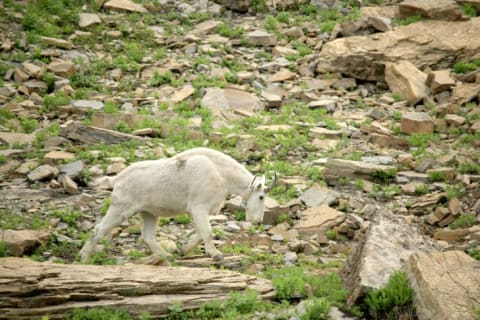
Cutthroat trout require water below 67.3°F, typically found in lakes and streams just below glaciers. This species already suffers from habitat fragmentation and faces competition from and hybridization with rainbow trout—an invasive species. Cutthroat trout return to birth streams to breed, but hybrids lose that homing instinct and spread farther and farther from their original habitat. Recent monitoring indicates that hybrids also produce fewer offspring.
In all waters west of the Continental Divide, Midvale Creek in the Two Medicine River drainage, and Wild Creek in the St. Mary River drainage, the national park allows only catch-and-release fishing for cutthroat trout.
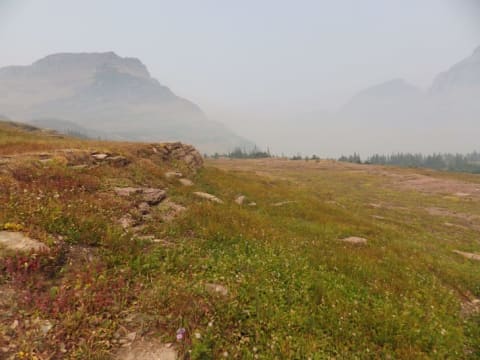
Warmer temperatures also increase the frequency of wildfires in the park; fire season in the northern Rockies now runs 78 days longer. Last year, the Sprague Fire southeast of Glacier’s Lake McDonald began on August 10 and continued to burn well into September, well past the time rain and snow would normally have extinguished the fire. Its smoke limited visibility at 6646-foot Logan Pass, as you can see in the photo above.
The rising temperatures that are melting the glaciers are also leading to an increase in the black mountain pine beetle population, to damaging effect. The insects have always been in the park, but extremely cold winter days used to reduce the overwintering population of eggs and larvae. With fewer of those extremely cold days, pine beetle outbreaks have grown larger, Fagre says, resulting in more dead trees, which provide additional fuel for fires.
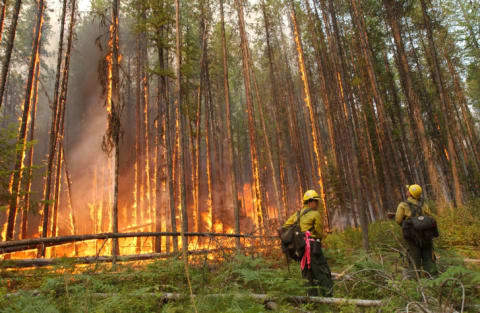
It's also changing the distribution of plants. Open subalpine meadows around the Pass are experiencing invasion by small seedlings, mostly firs. Heavy snowpacks, which used to suppress these seedlings and keep them from being established, have been in decline. Open areas contain edible plants, so their loss affects wildlife such as deer, birds, bees, ground squirrels, marmots, and bears.
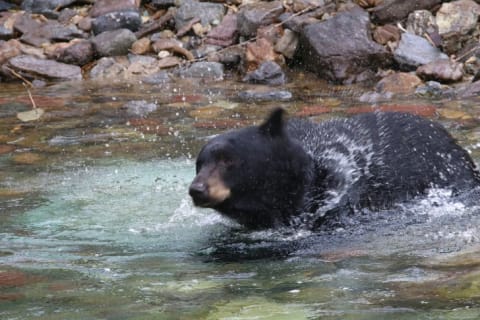
The park's treeline has shifted upward in elevation, Fagre says, and climate change has already altered tree distribution and ranges in Glacier National Park. Subalpine tree species are encroaching into higher elevations. Changes in the type and distribution of plants affects animals that depend on them for food and shelter and other plants adapted for certain conditions, such as shade or lack thereof. A number of high-elevation plants depend on snow fields; the alpine poppy, for example, grows only downhill from a source of water such as a snowbank or glacier and could ultimately disappear as that habitat does.
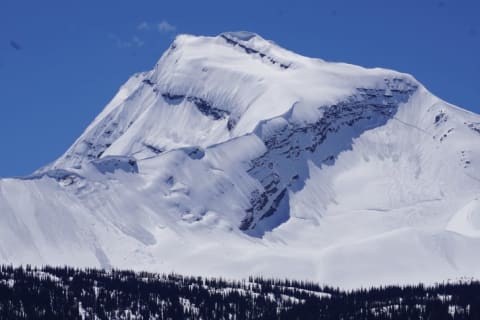
Melting ice also leads to fewer avalanches—which is a bad thing. Avalanches create disturbances important for the landscape, Fagre says, creating meadows up and down mountain faces, which are critical for foraging wildlife. Avalanches require snow as well as storm systems that set up weak layers, rain on snow events, or rapid warming to trigger them. Climate change affects each of these events and, therefore, the number and size of avalanches. Long-term loss of snowpack will mean fewer or no avalanches, leading to loss of the disturbance they cause and indirect effects from that on habitat and wildlife populations.
In general, climate change is affecting interacting forces that have always been around, according to Fagre, and it often isn't clear how those will ultimately play out. "We know some parts of this story well, other parts we can hazard guesses, and in others, we'll be surprised," he says. Those surprises likely won't be pleasant ones.